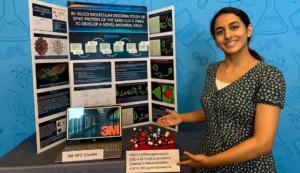India's Edu-challenge has Global Consequences
“If 250 million kids get left behind, it’s a liability for India and the world” Sandeep Aneja runs Kaizen, an Indian education investment fund. He warns of widespread unrest, an increase in terrorism, and a massive loss of development potential if half of India’s youth don’t gain access to quality education.
Compared to the US, India has nearly ten times as many school-aged children but spends about a tenth as much on education. There are close to a million government schools. About 75,000 private schools serve one quarter of students—more than two thirds in some urban areas.
Parents choose private schools because they are more accessible in the slums, attempt to teach in English, and have lower rates of teacher absenteeism (which runs 25-30% in government schools). While tuition at ‘affordable’ private schools ranges from $3-6 per month it still excludes more than 40 millions student that don’t have access to government schools and can’t afford private schools.
In addition to increased government spending of at least $7 billion annually, there is a small but thriving group of impact investors (both nonprofit and return-seeking) that is attempting to improve access to and quality of low cost private schools. There is $1 billion of private equity in the queue for Indian education, some well intentioned, some opportunistic.
There is also a growing link between education and the burgeoning microfinance sector. The Indian School Finance Corporation is making loans of $10,000-100,000 to school proprietors for equipment, technology, and expansion. Microfinance lenders like Trident make tuition loans to rural families that are reliant on seasonal income. The largest microfinance lender, SKS, is supporting the development of schools in rural areas with branch offices.
While the face-to-face tutoring sector is well developed, there’s not much online learning in India. Broadband penetration is very low. To reach the 250 million kids that Sandeep worries about, online learning will need to be part of the solution.
Formats that blend online and onsite learning will extend quality secondary learning to tens of millions of middle income families. However, it is more challenging to imagine how to dramatically improve education in the $6 per month range. Edu-entrepreneur Harsh Seti suggests a $20 price point for instructional technology which seems low but I didn’t think we’d have $200 netbooks in 2009.
Meeting the educational needs of the worlds poor is both an execution challenge and an innovation challenge. Entrepreneurs like Jay Kimmelman of Bridge International in Kenya are driving down costs and driving up reliable quality. When we can add inexpensive personalized learning technology to low cost well run school network, we’ll have a solution to Sandeep’s dilemma. (Pictures of kids in Delhi on the street and in government and private slum schools).








Douglas
See my post from this morning about the Kindle. I think the answer is also in the vertical of mobile devices technology.
http://eduvest.blogspot.com/2010/01/active-book-and-americas-education.html